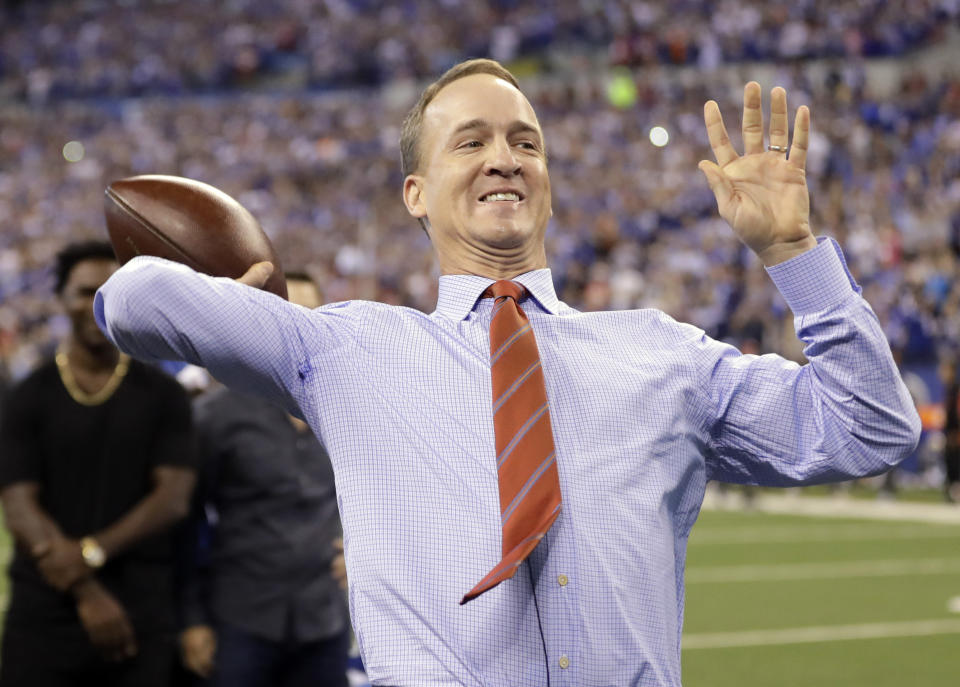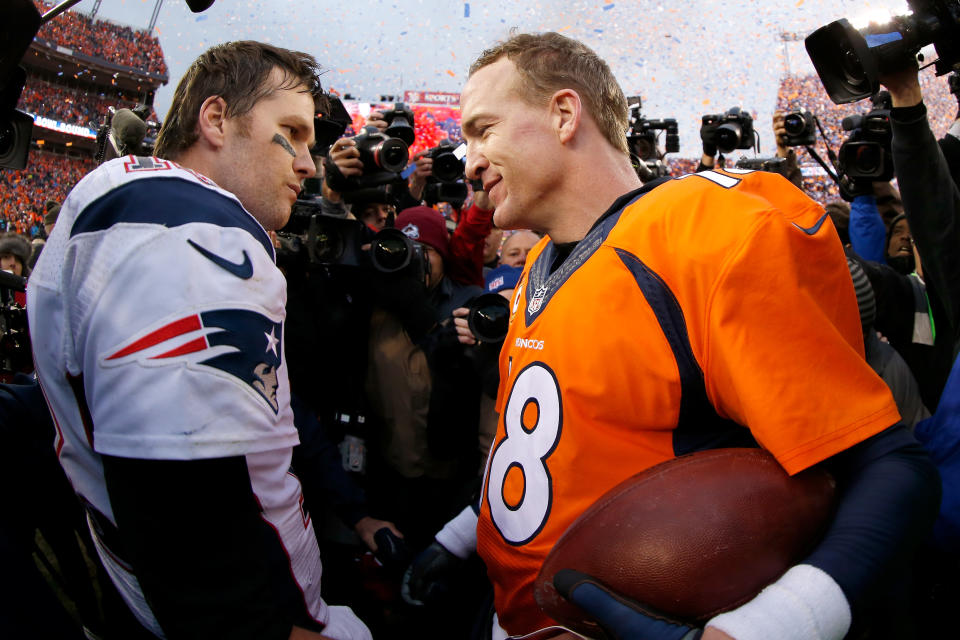The NFL misses Peyton Manning

NFL television viewership has fallen the past two seasons, although trying to figure out exactly how much isn’t an exact science since television executives will point to streaming numbers that offset some losses.
Regardless, pure television viewership is down. In 2015, NBC’s “Sunday Night Football” averaged 22.522 million viewers. In 2017 it was 18.175 million, a decrease of 19.3 percent.
“Monday Night Football” saw a 17.2 percent drop (12.986 million to 10.757 million) over the two seasons. “Thursday Night Football” was down 11.9 percent (12.425 million to 10.937 million).
The reasons are myriad. Protesting players. Colin Kaepernick not being signed in 2017. CTE discomfort. President Donald Trump’s rips of the league. There is also the fact that a surge in popularity for daily fantasy in 2015 may have pushed numbers to unsustainable highs. Plus technology has decreased viewership of all television.
It’s any of these things. It’s all of these things.
There is one other reason that has gotten scant attention but may be a bigger contributing factor than most realize.
Peyton Manning.
Or more specifically, no Peyton Manning.
Traditionally the NFL hasn’t relied on a single star to drive ratings. As such, when one retires, as Manning did following the 2015 season when he led Denver to the Super Bowl, the numbers don’t take a hit the way they can for the NBA, PGA or other sports when a Michael Jordan or Tiger Woods isn’t around.
Manning might be an exception. The uber-popular personality drew in casual viewers in ways that no one else in the league could, or can.
While NFL ratings are still extremely high, the league is missing that pop. Sports Illustrated noted that in 2017, just one regular-season game scored more than a 15.0 rating – the Dec. 17 New England-Pittsburgh game during the late Sunday window on CBS.
In 2015, there were 13 such games.
Denver lacks the big market to make 15.0-plus games easier to attain – the way Dallas, New York and New England can. But Manning lifted the Broncos up into a sure-bet 20-million plus viewership figure.
Manning was injured for part of the 2015 Broncos season but in his five times on national network broadcasts that year, Denver never scored lower than 21.1 million viewers. The games averaged 22.7 million, which is above even the “Sunday Night Football” average in 2015 and way higher than anything in 2017. There was also an appearance on “MNF” in Week 16 when he returned from injury that drew 15.8 million. It was the only time more than 15 million people watched “MNF.”
In 2014 the viewership was even stronger when Manning and Denver averaged 23.98 million viewers across nine national network broadcasts and 16.03 million in one “MNF” appearance.
Again, the ratings surge wasn’t all Manning and the ratings drop isn’t all no Manning. However, for the NFL to deliver the truly big event numbers, it needs more than its core audience that tunes in for nearly everything. It needs the more casual fan to flip on the game, see a recognizable name or brand, and watch.
Manning delivered that. He’d been around since 1998, when he was drafted first overall by Indianapolis. His late-career return from neck surgery and push for a second Super Bowl title, and past his rivalry with Bill Belichick and Tom Brady, was a griping storyline.

Manning had always been recognizable and well-liked. He was the son of Southern football royalty; his father Archie was a star for the University of Mississippi and the New Orleans Saints. Peyton was a sensation growing up in New Orleans and then at Tennessee. His younger brother Eli played at Ole Miss and is still with the Giants, where he has won two Super Bowls of his own. Older brother Cooper was such a presence that at one Super Bowl the NFL actually handed out quote sheets from him even though he never played in the league.
Through his long career, Peyton was used extensively in commercials ranging from Nationwide to Papa John’s, Gatorade to the NFL Sunday Ticket. His comedic acting ability was considerable. He hosted “Saturday Night Live,” appeared on “The Simpsons,” “American Idol,” “The Tonight Show,” “Live! with Kelly” and “Fox News Sunday,” among others. Just consider the breadth of those audiences.
From 2011-2015, he ranked as the No. 1 most popular player in the NFL per ESPN’s research department, when it first began polling the question. He was either the No. 2 or 3 most popular athlete in any sport (Michael Jordan is No. 1).
“Peyton Manning was the most popular NFL player consistently until his retirement in 2016 where he dropped to No. 2. Last year he dropped four spots to being the sixth favorite NFL athlete among fans,” ESPN’s Josh Krulewitz, summing up the research, said.
So last year, despite not being a football player for two full seasons, there were only five players more popular in the game than Peyton Manning.
You can’t just replace a guy like that. And the NFL hasn’t, at least not yet. The ratings tell part of that story.
Subscribe to The Yahoo Sports NFL Podcast
Apple Podcasts• Stitcher • Google Podcasts
More from Yahoo Sports:
• Angry Nike customers are setting their gear on fire
• Charles Robinson: ‘The most controversial move that Nike has ever made’
• Pete Thamel: Taggart’s FSU debut goes down in flames
• ESPN announcer taken off Washington games

